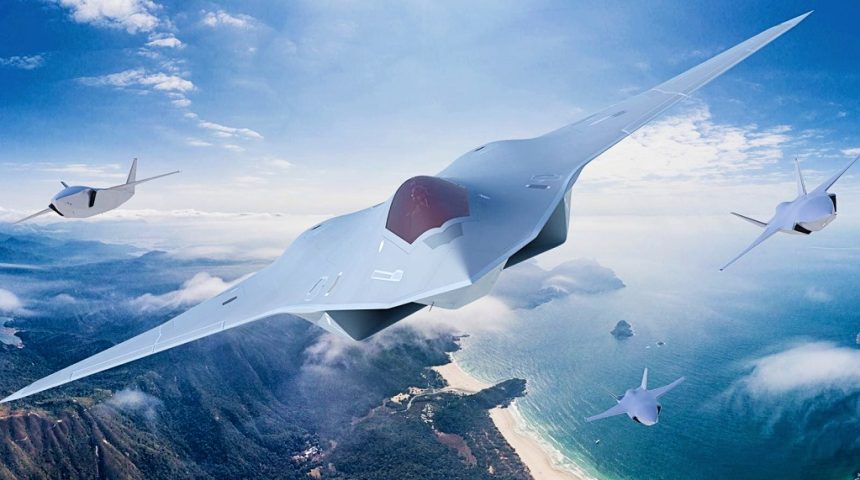The U.S. Air Force’s Next-Generation Air Dominance program is currently under a comprehensive review to reassess the requirements of the 6th generation manned fighter in face of rising costs and rapid technological evolution.
The U.S. Air Force’s Next-Generation Air Dominance (NGAD) program, which aims to deliver a 6th-generation fighter to replace the F-22 Raptor, is undergoing a significant review that could reshape its future. The service’s Chief, Gen. David Allvin, said last week this review is expected to conclude by the end of 2024, and will have major implications for the Air Force’s approach to air superiority.
The NGAD program was initially envisioned as a successor to the F-22 Raptor, a new cutting-edge air superiority platform designed to outmatch advanced adversaries in highly contested environments. The centerpiece of the program is a manned 6th-generation fighter, but with rising costs (expected to be in the hundreds of millions apiece) and rapid advancements in autonomous technologies, the Air Force has paused to reassess its approach.
The objective of the review is to reassess the requirements for the 6th generation fighter and explore whether the current development strategy aligns with the evolving threat landscape and budget realities. The results could reshape the program, shifting focus from a manned 6th generation fighter jet to a more cost-effective and technologically advanced system of systems.
Air Force Secretary Frank Kendall has emphasized the importance of this review, indicating that it will determine whether the Air Force needs to move forward with the manned NGAD fighter as planned or shift to a distributed, multi-platform strategy. The review will also explore how unmanned systems, particularly Collaborative Combat Aircraft (CCAs), can complement or even replace traditional fighter jets in some roles.
The B-21 Raider also appears to be involved in the review, as the Air Force is evaluating an ‘expanded’ role for the new stealth bomber in the future of air dominance. Let’s not forget that the B-21 has also been defined as the world’s first 6th generation aircraft.
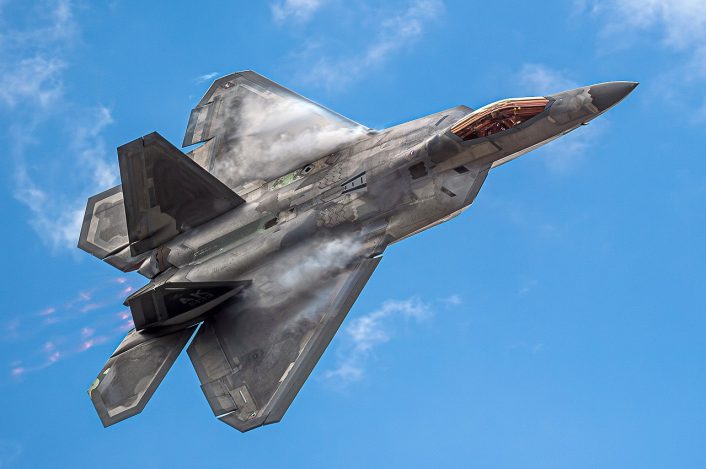
The Review: Rethinking the Role of Manned 6th Gen Aircraft
Air Force Secretary Frank Kendall initiated a “strategic pause” earlier this year to ensure the NGAD meets the operational needs of modern warfare, which now increasingly involves autonomous systems such as Collaborative Combat Aircraft (CCA). With this review, the service is “going back to the beginning” to re-examine its fundamental requirements for a 6th-generation crewed fighter.
“From a requirements perspective, what I would say is we’re going back and starting at the beginning with ‘What is the thing we’re trying to do?’” said the Vice Chief of Staff James C. Slife. “‘How do we achieve air superiority in a contested environment?’ would be one way to frame the question. A different way to frame the question would be, ‘How do we build a sixth-gen manned fighter platform?’ I mean, those are not necessarily the same question.”
The initial focus was on creating a high-end fighter with cutting-edge capabilities, but now, the emphasis is shifting toward a more integrated approach that considers the roles of CCAs, bombers like the B-21, and a distributed network of capabilities. The unmanned platforms could serve alongside manned fighters, reducing the reliance on a traditional, highly expensive 6th generation crewed aircraft.
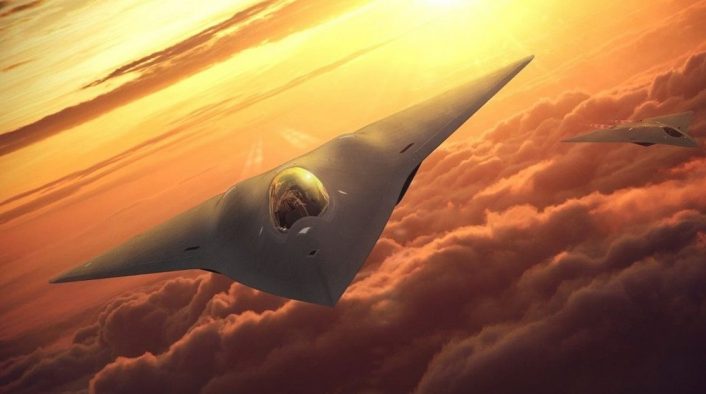
One of the most critical aspects driving the review is the rising cost of the NGAD program, with the estimated price reaching several hundred million dollars per aircraft. The Air Force, under Kendall, is pushing for a leaner and more efficient program, exploring ways to break up the NGAD’s capabilities across multiple platforms to lower the overall cost.
This could mean a reduced emphasis on a single, all-encompassing fighter jet, favoring a networked approach that includes unmanned systems, bombers, and more affordable fighters. Kendall already anticipated that the program might drastically change to lower its unit cost below the one of the F-35, with Slife suggesting a new approach which would involve distributing capabilities among different assets.
“We’ve gotten to a point where [with] our systems-level integration, we have the ability to disaggregate these capabilities and look at air superiority more broadly,” Slife said. “So the radar may be in one location, the munition may be in another location.”
Allvin also revealed a notional “adaptable” concept of what has been defined as a “Light Fighter,” although it later emerged that the concept was AI-generated for the presentation. Allvin advocated for switching from the paradigm of “built to last” of the Cold War and post-Cold War era to “built to adapt,” saying that the “underlying assumption” was that systems that were built to last would be “relevant” for the future, implying it might not be the case in many aerospace platforms today.
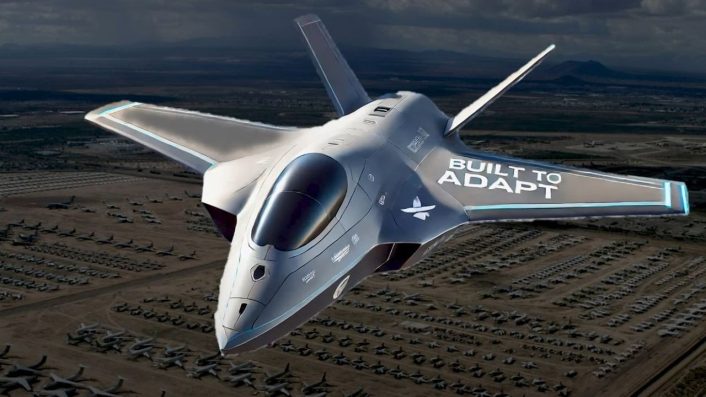
Collaborative Combat Aircraft: the New Frontier of Air Dominance
The development of the autonomous systems has advanced more rapidly than expected, leading some to suggest that NGAD’s crewed fighter might not be as essential as initially planned. The combination of CCAs with manned platforms like the F-35 and F-15EX could provide a more affordable and flexible solution to achieving air superiority.
The rise of CCAs reflects the Air Force’s shifting priorities, where a system-of-systems approach may take precedence over a singular focus on a high-cost manned fighter. The combination of manned and unmanned systems also allows for greater flexibility and the potential to deploy assets in more distributed and resilient ways.
The Air Force is rapidly advancing the development of CCAs, with plans to begin deploying over 150 units in the next five years. These autonomous systems could take on a range of missions, from surveillance to direct combat, working as force multipliers in collaboration with manned platforms and taking on high-risk missions traditionally performed by manned fighters.
Unlike legacy fighters, CCAs feature modular designs, enabling rapid upgrades and streamlined maintenance. The modular design and open architecture, the latter becoming a staple in the design of modern military aircraft, allows to introduce new capabilities as they become available, allowing in turn to always field the latest technologies to keep an edge over rapidly evolving battlefields.
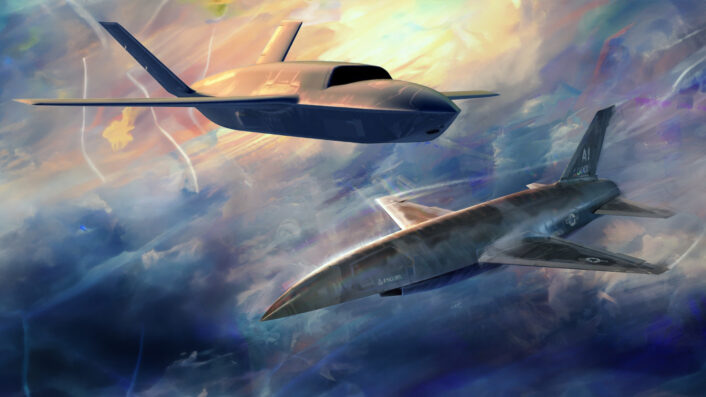
In early 2024, Anduril Industries and General Atomics were awarded contracts to design and test production-ready CCAs, marking a pivotal step in the program. Both companies are developing these unmanned aircraft to support both the upcoming NGAD fighters, as well as current F-35s and other manned aircraft, by sharing sensor data, executing coordinated maneuvers, and potentially carrying out combat roles.
The Air Force is planning to field a diverse fleet of over 1,000 CCAs, designed with modular configurations for weaponry, sensor capabilities, and rapid adaptability to mission needs. One notable advancement this year was the first flight of the XQ-67A, a low-cost drone designed by General Atomics under the Off-Board Sensing Station (OBSS) program, which occurred in February 2024.
This platform, along with the earlier XQ-58A Valkyrie, demonstrates a “common chassis” concept—using shared components for various drone models to streamline production and reduce costs. This approach aims to provide a scalable, cost-effective solution for enhancing combat capacity without relying on high-cost crewed jets, which is essential given the Air Force’s budget constraints and strategic emphasis on distributed, resilient forces.
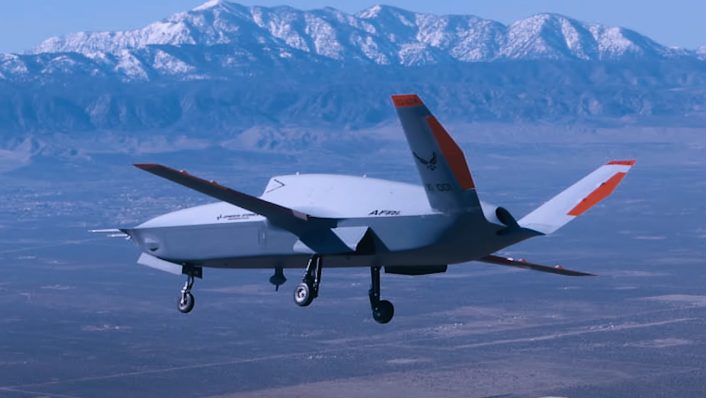
The B-21 Raider’s Growing Role
In addition to CCAs, the B-21 Raider stealth bomber has emerged as a key player in the NGAD review. Originally conceived as a long-range stealth bomber, the B-21 is now being considered for roles beyond its traditional mission set, including air superiority missions typically reserved for fighters.
In fact, Gen. Allvin recently said that the service has “not taken off the table” the possibility of a more prominent role for the B-21, although he did not explicitly state either air dominance or air-to-air combat roles. Interestingly, this was not the first time that the Air Force has implied a possible air-dominance role for the B-21 Raider.
“If we were to characterize it as a fighter, we would be thinking too narrowly about what kind of airplane we need in a highly contested environment,” said in 2019 Maj. Gen. Scott Pleus, at the time the Pacific Air Forces Director of Air and Cyber Operations. “A B-21 that also has air-to-air capabilities” and the ability “to work with the family of systems to defend itself, utilizing stealth – maybe that’s where the sixth-generation airplane comes from,” he added.
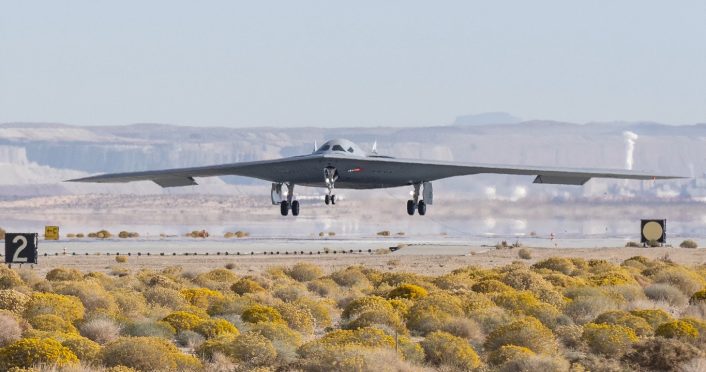
The B-21’s ability to operate in highly contested environments and deliver a variety of payloads makes it a versatile option. The bomber is already in production, and expanding its role could provide a more immediate and cost-effective alternative to the NGAD fighter, at least for some roles.
Some Air Force leaders have suggested that increasing the number of B-21s in the fleet could fulfill some of the missions originally planned for the NGAD fighter. While Gen. Allvin did not mention further B-21 acquisitions and Air Force officials said that 100 Raiders are sufficient to the current operational needs, Northrop Grumman CEO Kathy Warden commented that the service might be looking at reconsidering the final number of the bombers.
This multi-role capability of the B-21 makes it an attractive option in an era of tight defense budgets. Its unit cost, however, is much higher compared to NGAD, with various estimates putting the price tag over $780 million per aircraft. In June, Northrop Grumman and the government negotiated a “not-to-exceed” price for the additional 19 aircraft, which is more than the average unit price of the first five LRIP (Low-Rate Initial Production) lot of 21 aircraft.
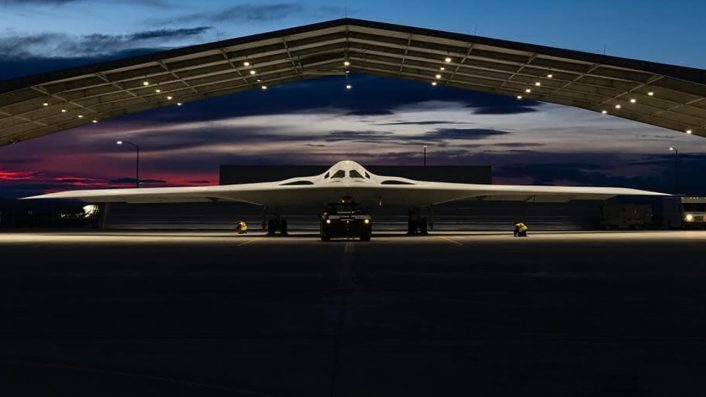
Budget and Technological Considerations
Cost has been a major factor driving the NGAD review. Early estimates suggest that each NGAD fighter could cost upwards of $300 million per unit, raising concerns about the program’s affordability and long-term sustainability. The Air Force is under pressure to balance cutting-edge capabilities with budget realities, particularly as it faces flat or declining defense budgets in the coming years.
The NGAD review is not only a re-evaluation of specific platforms but also a strategic reassessment of how to maintain air superiority in a more distributed and cost-effective manner. Before the latest news and the pause on the program, the U.S. Air Force wanted to procure 200 NGAD fighters along with 1,000 CCA that will cooperate in the “loyal wingman” role with the sixth-generation combat aircraft.
Kendall said that the service is looking at options to increase the force size as part of the force structure design review. The Air Force is looking to have a larger fleet of cheaper aircraft, rather than a small fleet of very expensive ones. “The more the airplane costs, the fewer you’re going to have. Numbers do matter,” noted Kendall.
As for the price, Kendall said they “haven’t set a number or threshold.” “I’ll just give you this off the top of my head: The F-35 kind of represents, to me, the upper bounds of what we’d like to pay,” he later added. The current price tag of the F-35 is at around $80 million.
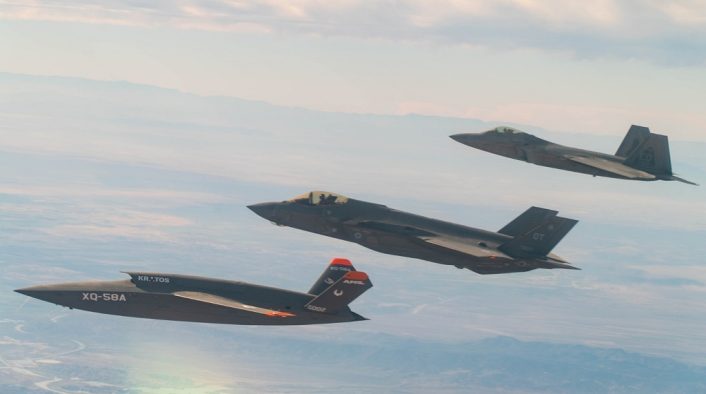
However, reducing the price tag of NGAD would possibly involve reducing range and payload of the aircraft, which would increase the reliance on tankers. Here then comes into play the capability to refuel the 6th gen fighter also in a contested airspace, with a tanker able to defend itself. This tanker is known as the Next-Generation Air-refueling System (NGAS), designed to be able to operate closer to the frontlines to better support fighters, while more “traditional” tankers would be employed at a safer distance.
As the NGAD review is close to the finish and NGAS prepares for the analysis of alternatives, new bad news arise for the programs: no matter the combination, they might all be unaffordable without major changes, according to Aviation Week. In fact, the service’s top priorities right now appears to be the nuclear modernization, Space Force, base defenses and means to attack “adversary’s long-range kill chains.”
“The variable that concerns me the most as we go through this analysis and produce a range of alternatives is going to be the availability of adequate resources to pursue any combination of those new designs,” Kendall said. “Right now, given our commitments, our resources and strategic priorities, it is hard for me to see how we can afford any combinations of those new designs. What I worry about the most is the adequacy of our resources.”
As mentioned, the Air Force is also exploring how different technologies, such as CCAs and B-21s, can work together as part of a larger networked force, greatly influencing the NGAD program initially started in the 2010s. Moreover, advances in autonomous technology and artificial intelligence (AI) have outpaced initial expectations.
Since “we did the initial analysis of alternatives for NGAD, frankly, our technology base has advanced in ways faster than we anticipated,” said Andrew Hunter, Assistant Secretary of the Air Force for Acquisition, Technology, and Logistics. “So we see that there are capabilities that we have [now] that perhaps we would want to be part of this mission space going forward that weren’t baked into where we started with the NGAD system.”
These developments could further reduce the need for a traditional manned fighter by allowing for more agile and responsive systems that can adapt to new threats faster than human pilots. The Air Force’s shift toward integrating these emerging technologies reflects a broader trend in modern warfare, where autonomy and AI are playing increasingly central roles.

A Recap About the “Old” NGAD
In September 2020, Dr. Will Roper, the then Assistant Secretary of the Air Force for Acquisition, Technology and Logistics, made it public that the U.S. Air Force had secretly designed, built and flown at least one full-scale prototype of a new generation fighter aircraft, as part of the Next Generation Air Dominance (NGAD) program.
Few days after the digitally-engineered advanced sixth-generation full-scale flight demonstrator was announced, the Secretary of the Air Force Public Affairs published on the Defense Visual Information Distribution Service an interesting graphic for the Air Force’s 73rd birthday featuring an unknown new aircraft.
While the aircraft in the image could be completely fictional, its shape could also be a loose hint at the design chosen for the first prototype build for the Next Generation Air Dominance (NGAD) program.
Fast forward to 2023, according a podcast from the Defense & Aerospace Report, which you can find here, at least three NGAD demonstrators are involved in testing. A couple of weeks later, on Jul. 1, 2023, Lockheed Martin’s official Instagram account posted an story to celebrate the 80th anniversary of its famous Skunk Works advanced projects division. Among the aircraft silhouettes shown in the IG story, there was one that really struck everyone’s attention: the one of an unknown, clearly manned next generation aircraft.
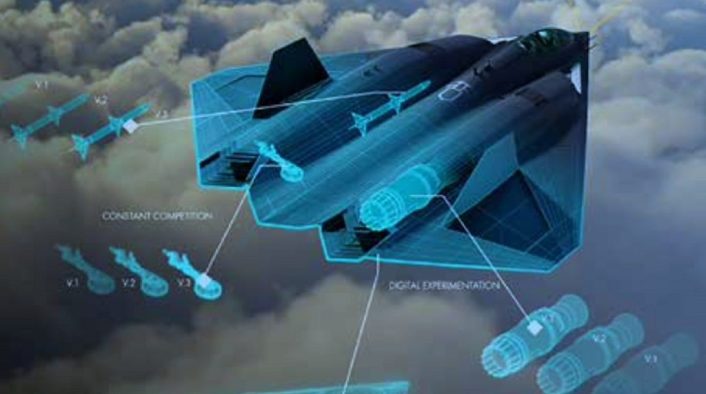
Later that year, Air Force Secretary Frank Kendall revealed that a secret, multi-agency X-plane program paved the way for NGAD by demonstrating new technologies for the 6th gen aircraft and its family of systems. The program was part of “The Dominance Initiative” study commissioned to DARPA (Defense Advanced Research Projects Agency) in 2014.
It is not clear if Kendall refers to the same full-scale flight demonstrator mentioned by Roper in 2020 or if these prototypes explored new advanced technologies that later merged in that demonstrator. The latter explanation appears to be the most likely, as the Secretary added NGAD is currently structured as “the combination of aircraft – a crewed aircraft [and] unmanned aircraft – that will have some of those technical characteristics we demonstrated could be done”.
Before the latest news and the pause on the program, the U.S. Air Force wanted to procure 200 NGAD fighters along with 1,000 CCA that will cooperate in the “loyal wingman” role with the sixth-generation combat aircraft. While each NGAD aircraft is expected to cost hundreds of millions of dollars, the CCA are designed to cost “in the order of a quarter or a third” of the current unit cost of an F-35.
Considering the average unit price for F-35s in the latest production lots is around $82.5 million, the CCA’s price could be between $20.6 million and $27.5 million. This is less than the price of a MQ-9 Reaper, which costs roughly $32 million. Even if the cost is “small”, the CCA are not considered expendable or attritable, but rather “systems that you can accept losses of a fraction of them and not have a big operational impact”.
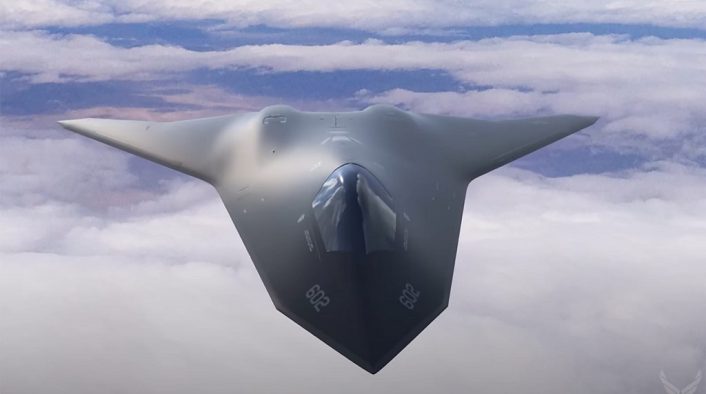
Conclusion
As the NGAD review nears its conclusion, the future of the Air Force’s air superiority strategy remains uncertain. The review will determine whether the service proceeds with the manned NGAD fighter as originally planned or shifts focus toward a more integrated, multi-platform approach that includes CCAs and an expanded role for the B-21 Raider.
What is clear is that the Air Force is not merely looking to build a new fighter—it is rethinking its entire approach to air dominance in an era of rapid technological change and budgetary constraints. The outcome of the NGAD review will have long-lasting implications for the future of U.S. airpower, shaping how the Air Force prepares for potential conflicts with near-peer adversaries like China and Russia.

